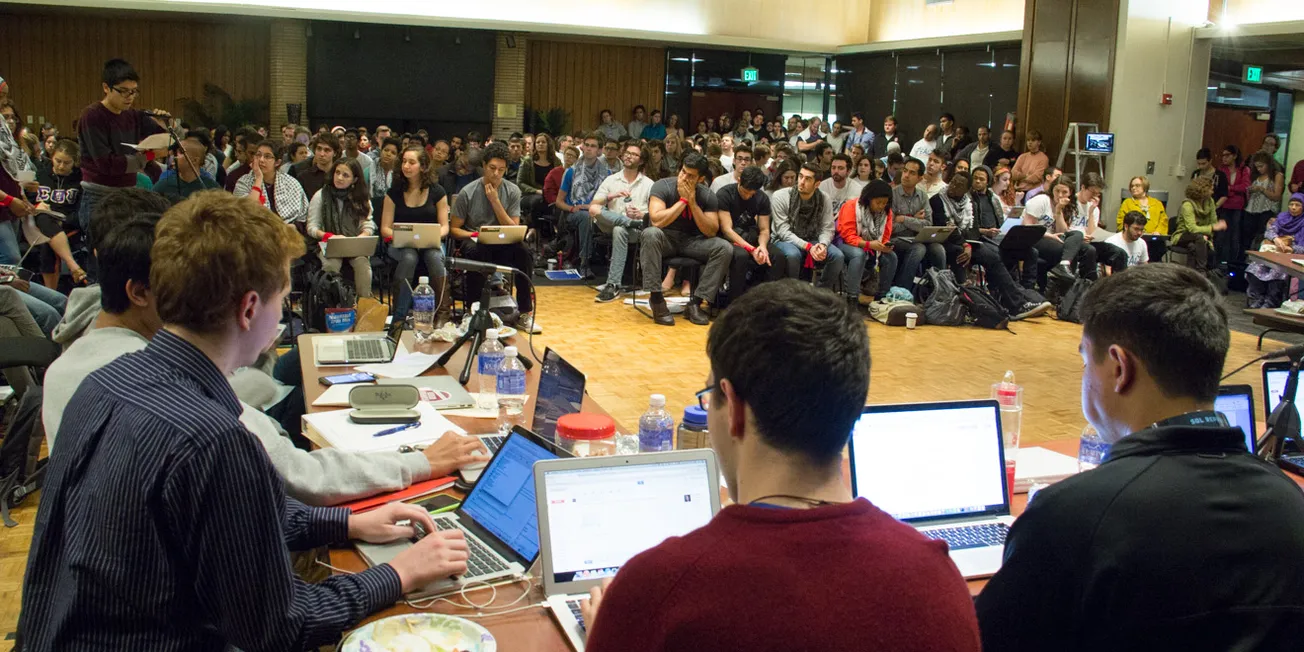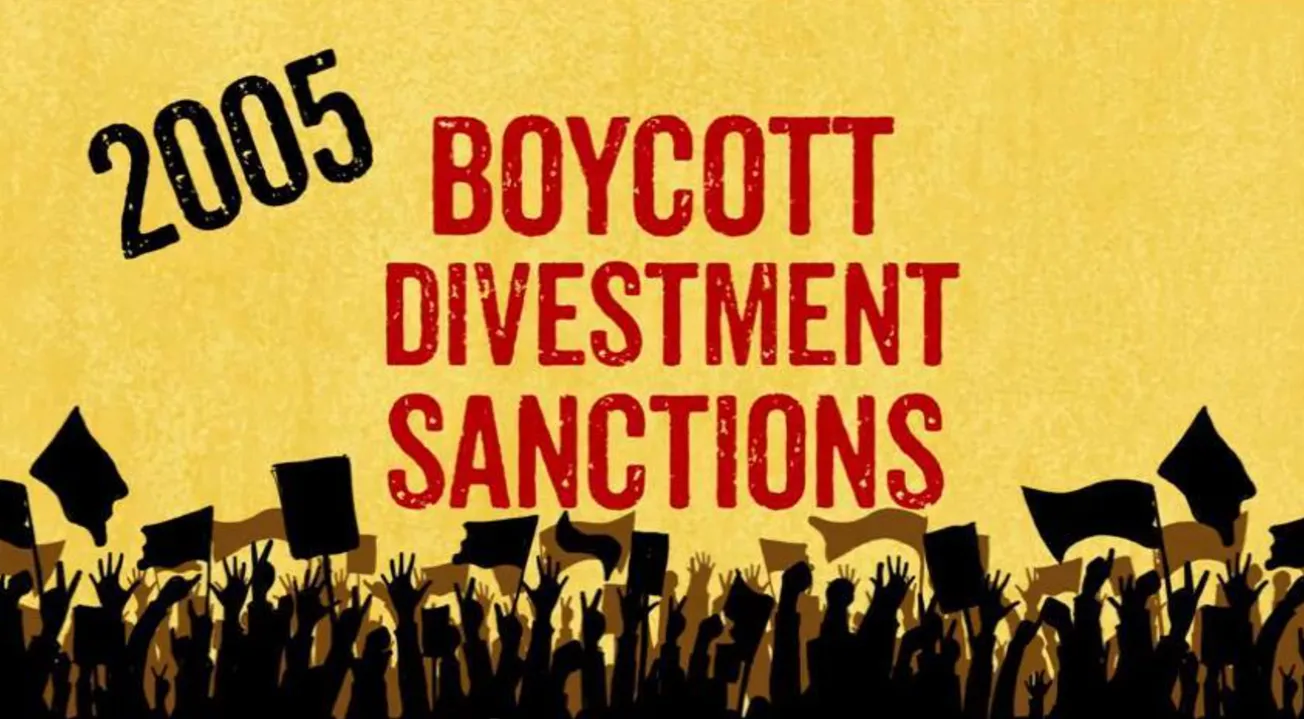Table of Contents
This letter to the Stanford community seeks to raise concerns about the economics of divestment, a component of the debate that has been neglected thus far.
Divestment from companies operating in the West Bank was a centerpiece of campus discourse last quarter. Stanford Out of Occupied Palestine (SOOP) touted the supposed ethical imperative that Stanford University has to divest from companies that “profit from human rights violations in the Occupied Palestinian Territories”yet there has been relatively little discussion on how divestment works and the actual impact (beyond symbolic) that divestment would achieve.
The mechanics of divestment are somewhat opaque. Divesting means selling shares of stock — or vowing not to buy any — in the companies that SOOP targets. Supposedly, this will put financial strain on those companies, depriving them of the financial resources needed to conduct their business. Unfortunately, this is untrue because the financing from the company’s stock was raised a long time ago and because the real market effect would be trivial even if Stanford were to divest its holdings.
First, proponents of divestment claim that it financially damages targeted companies, yet the money raised from the company’s stock is no longer used to finance these firms’ financial needs. When a company considers ways to raise money to finance its operations, it may choose to offer shares of its stock to the general public in exchange for financial capital. This is known as an initial public offering (IPO). During the IPO, the company sells shares of its stock, i.e., fractions of the company itself. It normally offers a fixed number of these shares at a predetermined price to raise a certain amount of capital. Upon sale of its stock, the company takes the money raised and uses it to accomplish its business goals. The actual shares are then bought and sold on a “secondary market” of institutional investors such as Stanford and retail investors that no longer directly involves the business. Thus, the fluctuation of a company’s stock price does not directly affect its financial capital. Some may argue that since the company’s management often owns a large amount of shares in the company, a hypothetical decline in share price due to divestment would affect executives and thus cause executives to change business practices. However, this is untrue, as a decline in share price without a proportional decline in the profitability of the company would result in the price being quickly driven back up.**** ****
Second, even if a declining stock price posed serious risks to a company’s operations, divestment would have a trivial effect. Stanford’s endowment executes trades in a manner that minimizes losses. Selling all of its positions in a company at once would cause the price to go down during the sale, which means that Stanford would receive less for its assets than what they were worth. Therefore, Stanford would spread out its divestment trades over a long period of time. It should be obvious why this is detrimental to Stanford’s financial goals.**** ****
Even if Stanford’s endowment sold all of its hypothetical positions in SOOP-targeted companies at once, less socially-conscious investors would pick up where Stanford left off in a heartbeat. In an age of algorithmic trading, the $60 trillion global equity market would voraciously drive the value of attractively-priced stocks back up in the span of an hour even if Stanford sold its entire $19 billion endowment tomorrow. This is a simple reality of capitalism – if a company can earn a decent profit, socially indifferent investors will vie for the opportunity to capitalize on Stanford’s divestment. To further illustrate this, consider the following statistics. SOOP targets eight companies that it alleges are profiting from the Israeli-Palestinian conflict in a way that negatively impacts Palestinians. Of the seven public companies there are hundreds, if not thousands of other institutional owners with financial interests in each company. There are over 1300 institutional owners for every company except G4S and Elbit Systems (which have 360 and 165 institutional owners, respectively). For each company, either 0% or 0.04% of those institutional owners are endowments, except Caterpillar, of which 2.53% are endowments. (Stanford is not among those endowments). Even if all invested endowments completed divested from their positions in the six of the seven public companies (the exception being Elbit Systems)**, the financial markets would barely feel the impact.** ****
Members of the divestment movement also specifically reference Stanford’s alleged success with the South African divestment movement. This too is untrue. In a statement to the Faculty Senate, President Hennessy debunked this narrative: “Contrary to folklore, the Trustees never voted to divest from all companies doing business in South Africa. They approved selectively divesting from a small number of companies over a period of several years. Those companies were individually contacted and either ignored or refused requests by the university to work towards implementing the so-called Sullivan principles. Subsequently, the university made a decision in those cases to divest.” Although Stanford did choose to divest in those scenarios, the University’s divestment was not able to impact or pressure the company’s practices.**** ****
In light of the facts presented – specifically, that the argument for divestment can claim no tangible effect in financially deterring businesses allegedly profiting from human rights violations – it is unclear what utility the symbolism of divestment would achieve. President Hennessy said that “in the nearly 15 years that I have been president, and my 30 years here as a faculty member, I have never seen a topic that has been more divisive within the university community.” Whatever we have to gain as a community from washing our hands of these alleged injustices from a comfortable distance is not worth the financial damage it would cause to our university, and still less the alienation it would cause many members of our community.
**** ****









